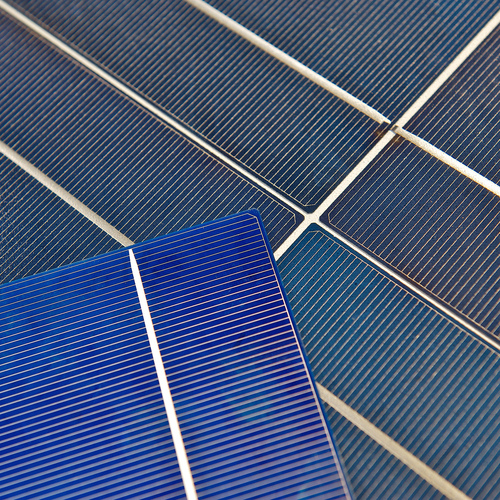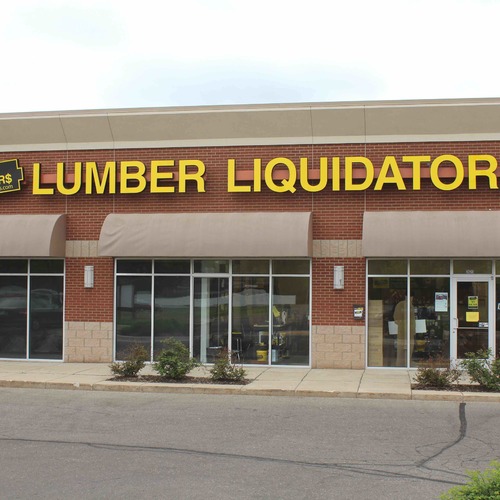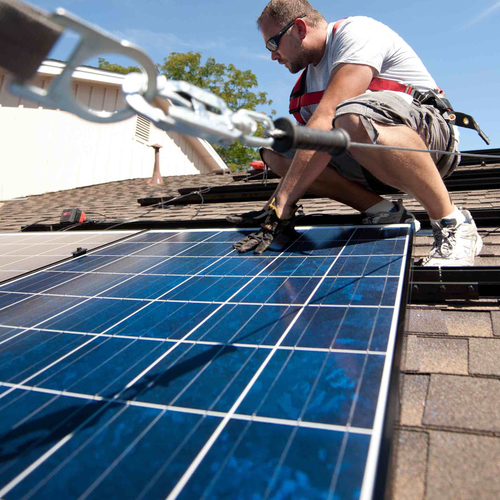
When China dives into a technology, it does so in a big way. Nowhere is this more the case than in photovoltaic (PV) panel manufacturing, where dramatic growth has not only taken a toll on other manufacturers around the world, but also now threatens its own PV industry through rampant oversupply.
This has significant implications for us here in the U.S. — both good and bad.
What happened?
China learned how to manufacturer PV modules from leading-edge manufacturers in the U.S., Germany, and elsewhere, and then figured out how to do it better and much cheaper than anyone else. In just a few years, China came to dominate world PV manufacturing, leaving a trail of bankrupt Western manufacturers in its wake.
According to an in-depth article in last week’s New York Times, based on data from GTM Research, world PV manufacturing capacity in 2007 totaled about 5 gigawatts (GW), or 5,000 megawatts (MW). Of this, roughly 2 GW of capacity was in China. This year (2012), world PV capacity has grown to over 70 GW, and China’s share of that is about 50 GW. Just since 2009, Chinese manufacturing capacity has increased six-fold — from just 8 GW that year.
The problem is that demand for PV hasn’t been growing as quickly. World demand, which has been steadily rising, is now slightly over 30 GW (pretty impressive growth), but that’s less than half of current manufacturing capacity.
This glut of PV modules has resulted in plummeting prices. This has hurt not only manufacturers in the U.S. and the rest of the world that have been unable to match China’s manufacturing efficiencies, but also Chinese companies that are losing, according to the New York Times, as much as $1 for every $3 in sales.
Good for today’s buyers
Lower prices are great for those of us wanting to install PV systems at our homes or businesses. I’ve seen promotions recently for panels as cheap as $0.68 per watt. This is despite tariffs the U.S. put on Chinese modules earlier this year for dumping (selling at below cost) that amount to about 35%.
PV modules represent a significant chunk of the total system cost, but as costs of modules have dropped the share of total costs from other components has grown. In a typical residential system today, the PV modules represent only 20-30% of the total system cost. The “balance of systems” components include inverter, grid-intertie equipment, controls, and a mounting system, and of course there is labor. Balance-of-systems components are also dropping in price, but not as quickly as the PV modules.
Locally in southern Vermont, installers are putting in complete grid-connected PV systems with Chinese modules for as little as $3.40 per watt (for a 5-kW system), according to one installer I spoke with, while another, which uses American-made PV modules, listed system prices in the $3.80 to $4.00 range. Three years ago, $3.40 per watt wouldn’t even cover the cost of modules. In 2004, the average installed system cost in Vermont was about $11 per watt — more than three times today’s lowest cost. (The state-wide average is skewed by high-cost systems that include batteries for stand-alone applications.)
But the bottom line is that you have never been able to put in a PV system more affordably — even as state incentives have dropped. There remains a 30% federal tax credit, but the state incentive in Vermont has dropped, and the pot of money from which that incentive is paid gets depleted quickly each time its funding is renewed.
But not necessarily good for the health of the industry
While lower prices are attractive for those wanting PV systems, the shrinking diversity of PV manufacturers is a bad thing for the long-term health of the solar industry. Fewer companies and less geographic spread to those companies means that we’re at the whim of policies that we have no control over. Chinese companies have racked up huge debt. According to last week’s New York Times article, state-owned banks in China are carrying $18 billion in loans to PV manufacturers, while municipal and provincial governments have often provided loan guarantees.
Policymakers in China are apparently debating how to let PV manufacturers fail and how to choose which ones to keep afloat. In June of this year, GTM Research predicted that 21 GW of solar manufacturing capacity would come offline by 2015, due to this oversupply problem — as a result of company bankruptcies. If all of the companies were allowed to fail, we could quickly return to a seller’s market and prices could go back up.
The glut in Chinese PV manufacturing is also bad for Obama. The much-publicized bankruptcy of Solyndra Corporation, which had received significant federal support, was largely the result of lower-cost modules being available from China. (If anyone had asked me, by the way, I would have argued against supporting Solyndra, as I thought at the time the technology was gimmicky and unlikely to compete in the long term.) Solyndra wasn’t the only solar manufacturer to fail, and others will follow suit in the months and years ahead.
I’m hoping that enough of the world’s major solar manufacturers will remain in business with competitive enough prices to keep the cost of PV systems relatively affordable to those of us wanting to install them. We are making huge progress at adding significant solar capacity in the U.S., and I’m hoping to see that continue.
Alex is founder of BuildingGreen, Inc. and executive editor of Environmental Building News. He also recently created the Resilient Design Institute. To keep up with Alex’s latest articles and musings, you can sign up for his Twitter feed.
Weekly Newsletter
Get building science and energy efficiency advice, plus special offers, in your inbox.















3 Comments
COST = PRICE / LIFE
I don’t see how one can judge the affordability of PV at a given purchase price without knowing the life of them.
With a complex product such as bulldozers, its lifespan becomes quickly apparent by evaluating the early, partial failures and their cause as they occur. But with a light bulb, for instance, there is no way for a consumer to know the lifespan until it ends. In that sense, PV panels are more like light bulbs than they are like complex machinery.
However, with light bulbs, the investment in consumption per capita is relatively small, whereas the investment in PV panels is very high. Moreover, light bulbs have a long history of usage over which their life has been confirmed. PV panels from new manufacturers have no such history by which to gauge their life.
I am not an expert on PV panel technology, but I have heard it claimed that the sun wears out the panels just as sun fades colors in paints. And yet, I have heard others claim that the panels will last indefinitely as long as they remain sealed from water intrusion. Perhaps there is an assumption that since they have no moving parts, they will never wear out.
It's a mature technology
Silicon PV technology is over 50 years old now, and the degradation curves well known. Incrementally better manufacturing has extended this somewhat, but there is little doubt that the quality & longevity of Chinese PV panels circa 2012 exceeds that of US PV panels circa 1980 (most of which are still in service). CIGS and CdTe technologies are somewhat less mature, but benefit from the learning/development curves of silicon PV and don't seem to be any worse than silicon from a longevity point of view. These other PV technologies at times have had an edge over siliclon from $/W-peak point of view going forward they may take over the lions share of the market. Or not: both new silicon casting and proton-implant shearing methods are promising to taking thin silicon technology costs dramatically lower by using ~10% of the raw silicon, and in a form that is mechanically far more flexible than current mono and polycrytalline Si goods.
The cost of residential PV is mostly "rest of system" racking & inverter hardware, labor, and permitting costs, not panel costs. In Germany it takes literally 10% of the amount of labor and an even lower percentage permitting overhead as it does in the US, and installed costs are now around $2/Wpk for rooftop-residential, $1.50/Wpk for commercial/utility scale.
http://www.greentechmedia.com/articles/read/Solar-Installers-Tangled-Up-in-Red/
Inverters have a half-life much shorter than that of the PV panels themselves, and probably represent the largest system-lifecycle cost. Over 40-50 years of panel life it's reasonable to expect to replace the inverter at least twice, but the efficiency of the inverters will become incrementally better too, offsetting a good hunk of the panel aging losses.
It's a disruptive technology
I was at a seminar the other day for commercial PV customers, installers etc. One representative from a German company gave current European prices of 2 euro/W for rooftop installations and 4 euro/W for utility scale. Rooftop installations are cheaper as the suppliers are at a scale where they can access bulk prices, the mounts on a rooftop are simpler and cheaper than the stands used in free standing arrays and there's no land cost.
This is completely changing the conventional wisdom that utility scale PV's would be a cheaper option.
In Australia, reports indicate that 10% of daytime demand in NSW was met by rooftop PV's in sunny weather earlier this month. Electricity demand for power generated by centralised generators in Australia is falling off a cliff at the moment and while there are a number of relevant factors, rooftop PV's - heading towards 2GW installed - appear to be a significant contributor. Coal fired plant is being mothballed and other large fossil generation plants are being deferred.
Local Australian installers suggest indicative prices of $1.50/W installed at the 100kW size ie large building and residential prices are around $2/W. Much of the debate locally is around what's a fair feedin tariff. This has been reduced or is being reduced to 8c/kWh for new installations in a number of states.
Interesting times!
Log in or create an account to post a comment.
Sign up Log in